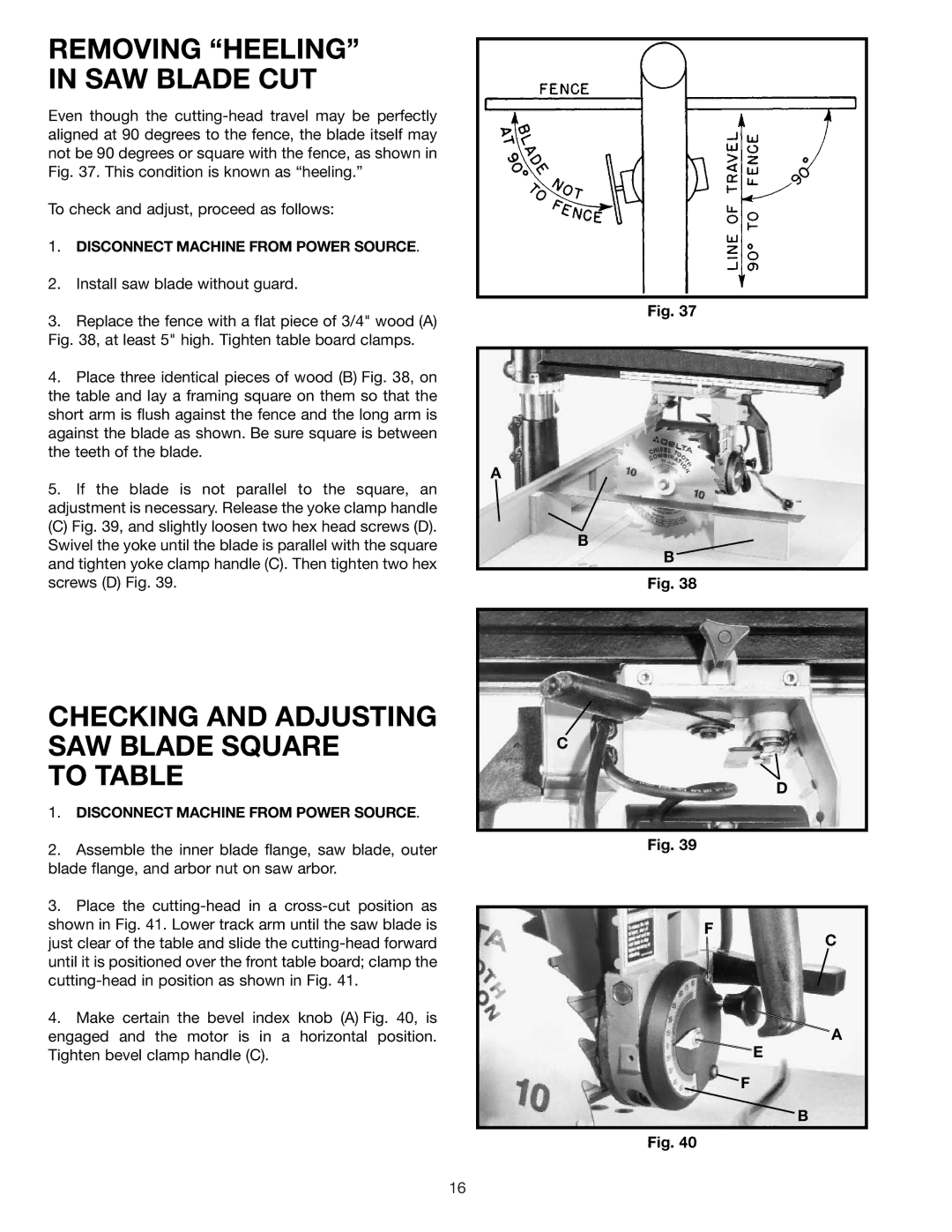
REMOVING “HEELING” IN SAW BLADE CUT
Even though the
To check and adjust, proceed as follows:
1.DISCONNECT MACHINE FROM POWER SOURCE.
2.Install saw blade without guard.
3.Replace the fence with a flat piece of 3/4" wood (A) Fig. 38, at least 5" high. Tighten table board clamps.
4.Place three identical pieces of wood (B) Fig. 38, on the table and lay a framing square on them so that the short arm is flush against the fence and the long arm is against the blade as shown. Be sure square is between the teeth of the blade.
5.If the blade is not parallel to the square, an adjustment is necessary. Release the yoke clamp handle
(C) Fig. 39, and slightly loosen two hex head screws (D). Swivel the yoke until the blade is parallel with the square and tighten yoke clamp handle (C). Then tighten two hex screws (D) Fig. 39.
CHECKING AND ADJUSTING SAW BLADE SQUARE
TO TABLE
1.DISCONNECT MACHINE FROM POWER SOURCE.
2.Assemble the inner blade flange, saw blade, outer blade flange, and arbor nut on saw arbor.
3.Place the
4.Make certain the bevel index knob (A) Fig. 40, is engaged and the motor is in a horizontal position. Tighten bevel clamp handle (C).
Fig. 37
A
B
B
Fig. 38
C
D
Fig. 39
F
C
A
E
![]() F
F
B
Fig. 40
16
